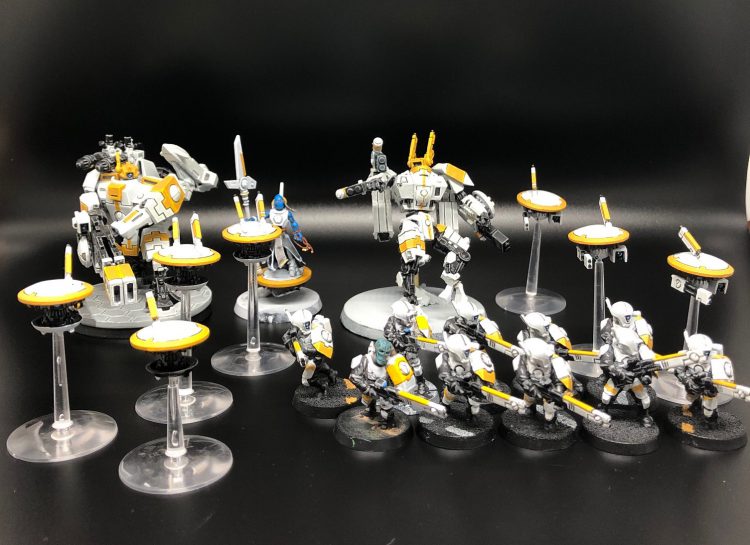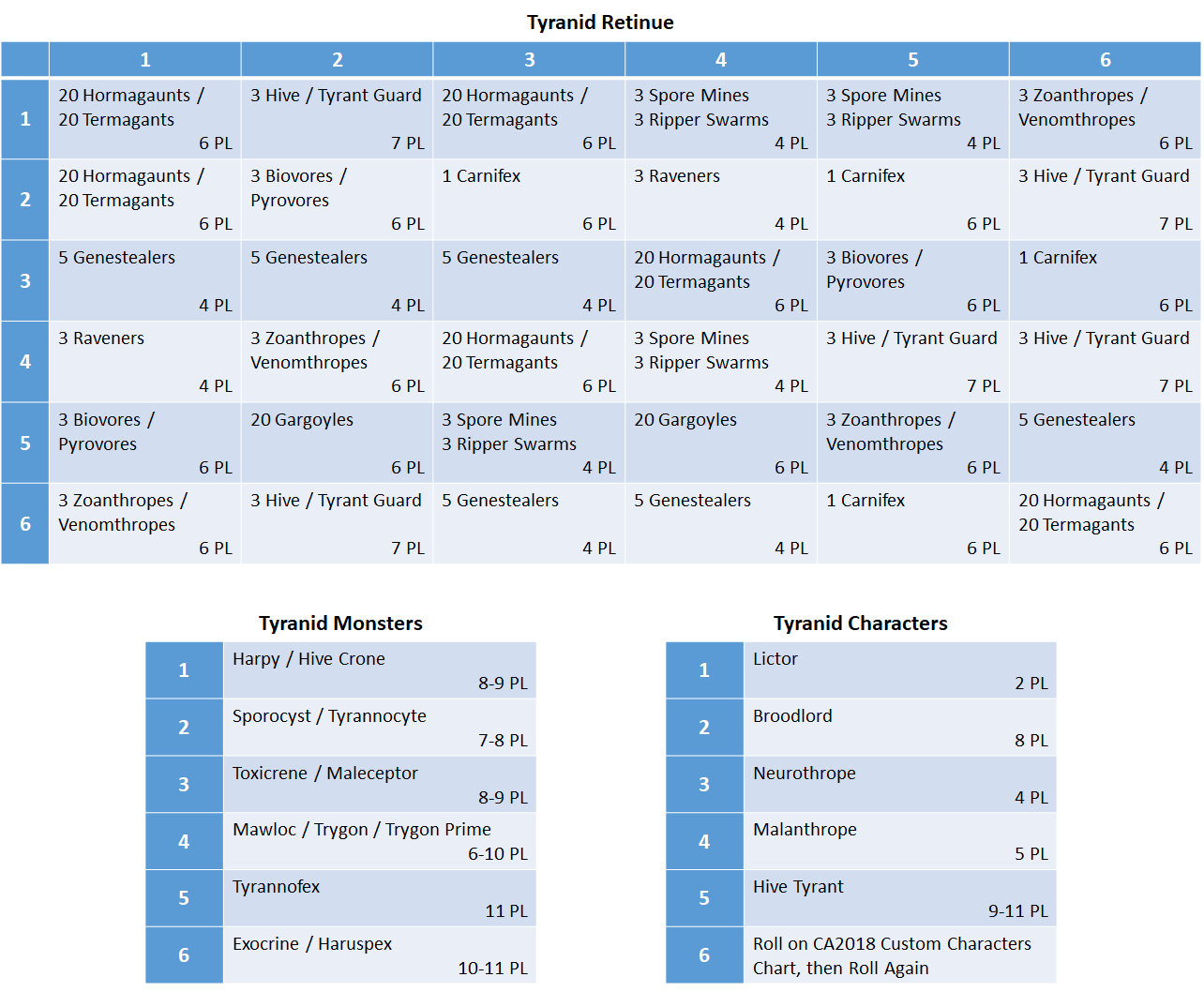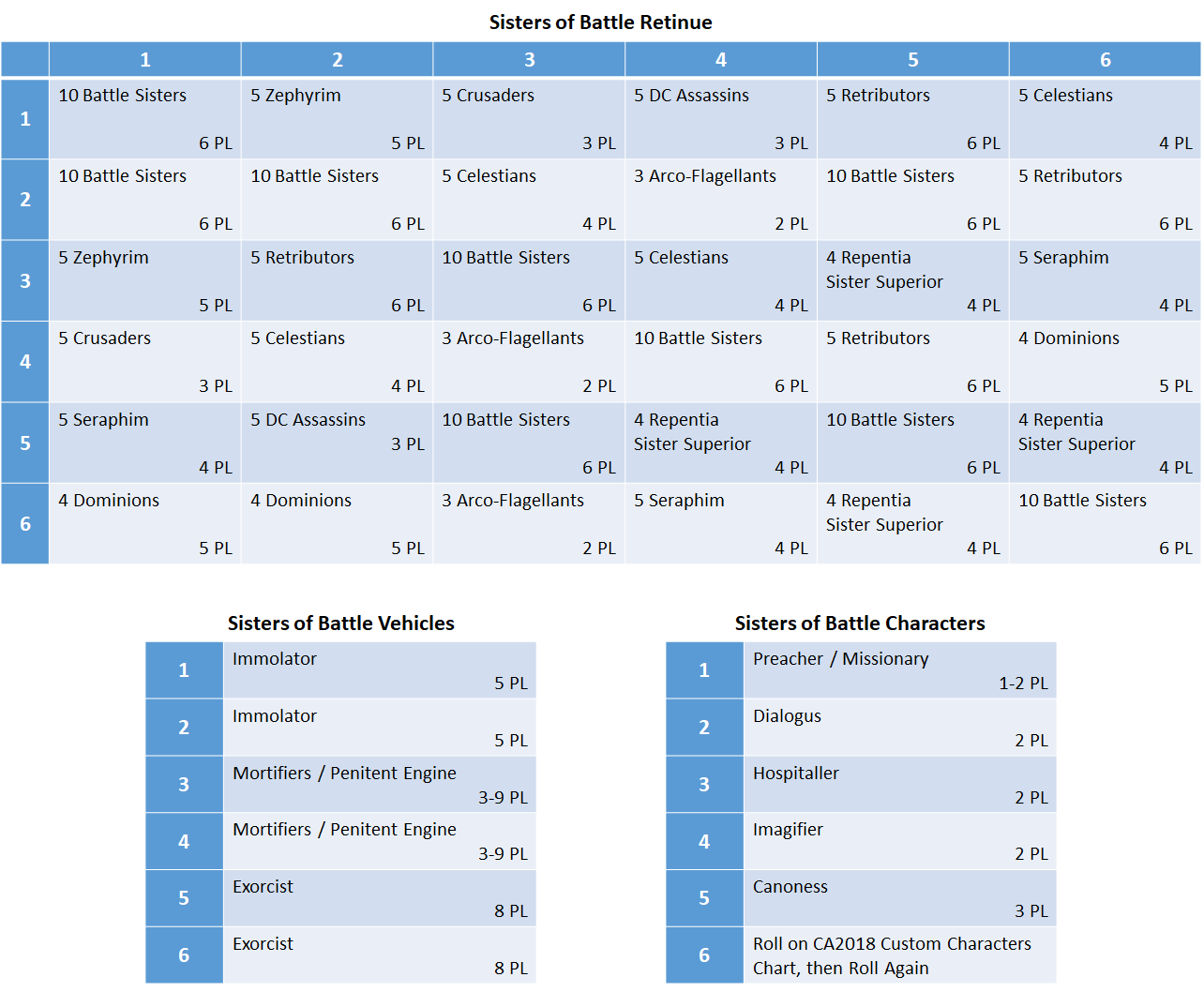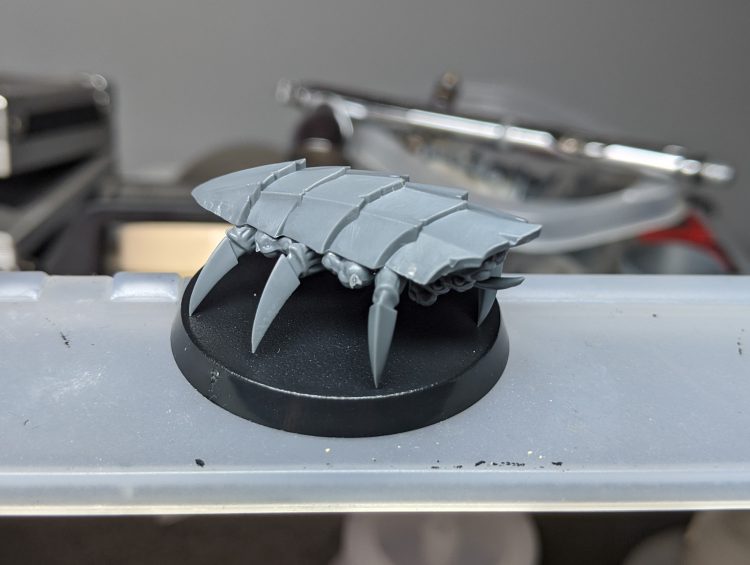The Warhammer 40,000 universe is a massive place, and the “Narrative Forge” hobby articles encourage thinking outside the box (literally) when putting models together and stretching yourself out in the hobby. They aim to make hobbyists and players comfortable growing beyond imitating the models they see in their Codexes and playing the rulebook missions, and serve as a source of inspiration for anyone wanting to forge new experiences in the hobby. This week, we’re sneaking in a new sub-series here on Goonhammer. The Path to Shame follows a few of our authors as they embark on starting new armies in the worst possible way. First, we’ll explain the concept, the players, and their armies, and in the future we might even check in with semi-regular progress updates.
A Shameful Path Has Led You Here
This idea sprung from Rob’s excellent Astradus Campaign. After the NoVA-buildup, post-NoVA funk, and then the typical holiday-season lull, he’ll probably be soft-rebooting the campaign for the new year, and a few of us are using it as an opportunity to pivot into new armies, and Evan had the brilliant suggestion of using a modified version of the Age of Sigmar Path to Glory system.
If you aren’t familiar, Path to Glory is a campaign system, originally designed for building Chaos warbands, where you pick your warlord, and then roll on a set of tables to choose their retinue and support characters. The randomized access to units results in some hilariously terrible builds, most of which won’t even be good enough for the HMOC format. The net result is that everyone has to adapt to a world where your list sucks because it doesn’t make any sense. For me, life carries on pretty much as normal.
The other appeal of this is that we were able to embed our sub-campaign within the larger campaign. No other players – and there are about 20 – are doing this, so in those games we keep our Warlord and build regular armies around them, but we can choose during our own games to use the brutally stupid Path to Glory armies instead, and still have them count. Wheels within wheels, reader.
Path to Glory is a twist on the well-known concept of “slow grow” or “Escalation” campaigns, representing your warlord as the head of a snow-balling crew of misfits, which is extremely cool. You start with a small force, something in the 500 point / 25 Power Level range, and then add a few more units every round, with an emphasis on painting as you go. It’s a good way to get into a new army without burning out or committing Wallet Crimes, and just needs a few tweaks to be ported from AoS to 40k.
Managing Expectations
The most important thing to keep in mind here is that this is, first and foremost, a Narrative system. We’ve been writing background stories for our Warlords (not so much the Tyranids, who so far have “Ah dang, a bunch of giant hungry monsters arrived. Have fun with that”), and no one is trying to optimize their lists here because, frankly, you can’t. The goal is just to force ourselves to paint new models, and while we’ve fudged a few rolls early on to avoid spending too much money up front, we’re not sticking to a plan or aiming for any specific known-good builds (because, again, with the way army construction works, you can’t).
Also, I Hope You Like Spreadsheets
First of all, we each had to create our own charts to roll on, since Beastigors aren’t a unit anyone has access to – this is technically true for most millenia, but especially applicable in the 41st.
Each player generated a d66 matrix (ie, roll two dice and find the intersection) for their Retinue, which is the main body of the army, and then a couple of supplemental d6 tables that could be rolled on a single dice. As far as which units went where, I used the same basic structure as the official matrix – rolling (1,4) is an Elite, all the doubles are a Troop, etc. With the unit type slots set, I filled them with kits that I either had on hand, or knew I wanted. Don’t feel obligated to include stuff that sucks just to cover the entire codex, but also maybe don’t stuff the entire thing with Thunderfire Cannons either.
Once the tables were finalized, we didn’t really have a plan for assigning which ones to roll on, just another round of talking through it. This style of campaign only works, and I cannot emphasize this enough, if you’re all on board with that – there’s a lot of self-awareness required, and the only way it’s ever going to be close to fair is by collaborating with the other players. If someone’s getting jobbed, you can fudge the dice a bit – the goal of the entire Path to Glory framework is to create interesting games on the table, not to win at the “rolling for a list” step, or even twice-removed in the “creating the tables you roll on in the first place” phase.
At any rate, there was a bit of back-and-forth between our shadowy cabal of warmasters here, to make sure the options were balanced – or at least as balanced as they can be given the circumstances – and also fun for all parties involved, which means I’m not rolling on the Riptide table for a while.

Points
We also had to figure out a way to make this work with points instead of Power Level. Units in 40k can be all over the place, with the wargear and model counts adding up to wide range – take a unit of XV-88 Broadsides, for example. It can be worth anywhere from 86 to 510 points, and 7 to 27 PL. This would mean rolling on the table for a unit, then adding wargear and models to total up the points, and then rolling again until you hit the agreed-on cap, and then not being able to change it. This sucks.
The arguments against Power Level have been covered in detail since it was released: PL works fine in AoS, but 40k generally doesn’t balance well using it. We’ve never seen a PL update, and points were tweaked just a couple of weeks ago. It doesn’t account for upgrades, and barely for model counts, which can make a huge difference in how a unit performs. It’s not granular enough. There’s a million reasons why points are seen as the better choice, but you get the point. Using Power Level would lead to wildly imbalanced armies, and leave some units out in the cold, so we fired up Excel and went to work.
The solution we came up with was just to use Power Level, because it was easier.
Another, More Different, Type of Points
Detachments are going to be a problem when running this style of campaign. Most of the time you should be able to roll into a Patrol, and eventually Vanguard/Outrider/Spearhead will become more common, but Battalions are going to be tough for a while, and it’s entirely possible that you roll up a bunch of weird stuff every time and never actually get anything that could be battleforged. The game is just flat-out better when you have enough CP to actually use your stratagems, so to avoid CP starvation, and level the field a bit, we’re just giving everyone 5CP to start with, and we’ll add 1-2 more every round as the armies grow. Eventually we might start offering proper detachments as an option, but we’ll burn that bridge when we come to it.
This is what we came up with for our armies – you could certainly find room to tweak these if you disagree, and we aren’t creating bespoke charts for all 20+ codexes, but if you wanted to make your own this should give a good feel for the process.
Tau (Greg)
 Something specific to my situation was the use of drones – normally these can be taken as add-ons to an existing unit, but since everyone else is running randomly-generated trash, it seemed like a Dick Move to allow myself to add shields all over the place, so I just haven’t. I want to focus on a battlesuit-heavy army, because I have a thing about Gundams more than I do Kroot, but I included them a few times just for variety. Drones ended up going in their own table, and I lumped the larger battlesuits in with the vehicles for balance purposes, since they’re functionally equivalent in the army.
Something specific to my situation was the use of drones – normally these can be taken as add-ons to an existing unit, but since everyone else is running randomly-generated trash, it seemed like a Dick Move to allow myself to add shields all over the place, so I just haven’t. I want to focus on a battlesuit-heavy army, because I have a thing about Gundams more than I do Kroot, but I included them a few times just for variety. Drones ended up going in their own table, and I lumped the larger battlesuits in with the vehicles for balance purposes, since they’re functionally equivalent in the army.
There was also an issue with the variance in unit sizes, so to avoid rolling 8 times and getting a bunch of Fireblades, we decided to bundle several smaller units into one selection.
Tyranids (Kevin)

Kevin: The chart above gives me the flexibility to do that. I can fill the ranks with troop units and infantry from the big chart, and then if I want to have something sufficiently terrifying I can add a monster or a character. Unlike the original chart I didn’t bother with doubles being Troop units or whatever, I just put together a distribution that made sense to me and limited options to between 4 and 7 PL.
Greg: Kevin (and Evan, below) have also done the smart thing and included an Upgrade roll on the Characters list. For this, instead of adding a new model to the army, they’ll be adding one of the upgrades from the tables in Chapter Approved 2018 to an existing character – it’s both a brilliant way to show advancement over the campaign, and also to avoid having to paint anything new.
Sisters of Battle (Evan)

This one is interesting, because most of the range isn’t actually out yet. Evan is starting from scratch and has designs on these bad boys (ladies?) that involve buying multiples of everything anyway, so the only problem is waiting a little longer for the models to be released before we can get started. It gives everyone more time to paint, so I can try running my own actual models instead of Booley’s. I have, instead, chosen to spend my hobby time kit-bashing a Fallen army that is absolutely never, not in a million years, going to hit the table.
The Starting Armies
We started off at 25 PL, or as close as we could get without going over (I ended up with 24, so I added a single drone to my commander to get him over the line – like I said, you can fudge it a bit, as long as you do the group the courtesy of running it past them first).
To keep it honest we used a discord dice-bot, which is something I highly recommend if, like me, you do most of your 40k list-crafting (or, for that matter, Goonhammer article-writing) at the office, where you probably don’t have access to your dice bag.
Most of your rolling at this point should be on the Retinue matrix, since that’s where your core units are, but the other tables you can maybe roll on once or twice, to get some heavy-hitters or other centerpiece units, but we wouldn’t recommend going too far with it just yet.
Greg’s Tau (25PL)
- Warlord: Commander in Enforcer Battlesuit (3x fusion blaster, shield generator, 1 markerlight drone)
- Ethereal on hover drone
- 10 Firewarriors, with 2 markerlight drones
- 4 shield drones
- 1 XV-88 Broadside (Heavy Rail Rifle and twin Plasma Rifle)
Kevin’s Tyranids (27PL)
- Warlord: Hive Tyrant with Wings
- 12 Ripper Swarms
- 12 Spore Mines
I want to pause here and stress that Kevin actually rolled this, we didn’t force him to do it. It’s probably the worst 40k list I’ve ever seen in my entire life, and I love it so very much.
Kevin: Yes, I rolled that. I decided to start with a flying Hive Tyrant since that gives me the opportunity to have a lot of fun with modeling. I wasn’t sure what the other units would be, but after rolling 44 four times and a 14 afterwards that’s what I got. I have absolutely no idea what I’m going to do with this list aside from lose a lot, but it does give me an opportunity to make some custom Ripper Swarms out of various bits I have lying around.

Anyway don’t expect me to roll on the main table ever again.
Evan’s Adepta Sororitas (25PL)
- Warlord: Canonness
- Repentia (9 Repentia and 1 Repentia Superior)
- 5 Seraphim
- 1 Exorcist
- 1 Imagifier
Good Times With Pals
So that’s where we’re at: everyone has their starting armies set, and we’re just in Hobby Mode for a while. Why not try your hand at Path to Glory in your next campaign, or even just for yourself, if you’re looking to start a new army? Well, for one, you’ll be getting a probably-worthless army out of the deal, which is clearly something worth spending hundreds of hours and dollars on, I guess. On the plus side, you’ll always have something to paint, even if you don’t know what it’s going to be (and it might be hot garbage), and you can always blame the dice when you get stuck with a bad list, instead of having to own that shame yourself. If you give this a whirl, let us know at contact@goonhammer.com, on our Facebook page, or down in the comments – we’d love to see what wretched misbegotten armies you end up running, or a vehicle table where 1-6 are all Monoliths.



You must be logged in to post a comment.